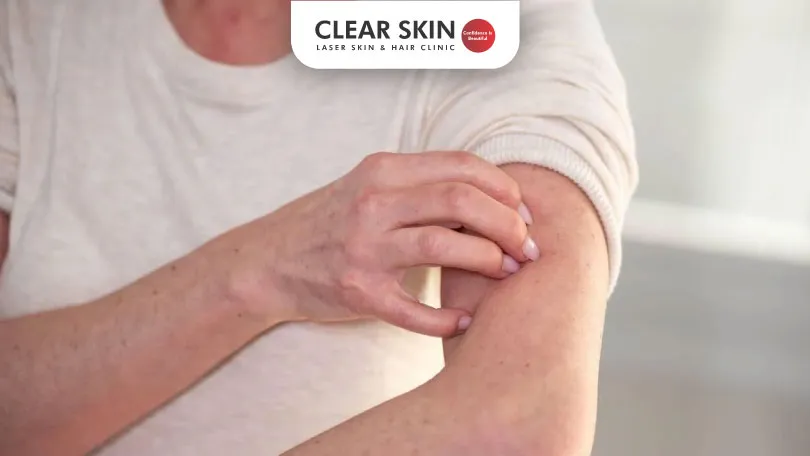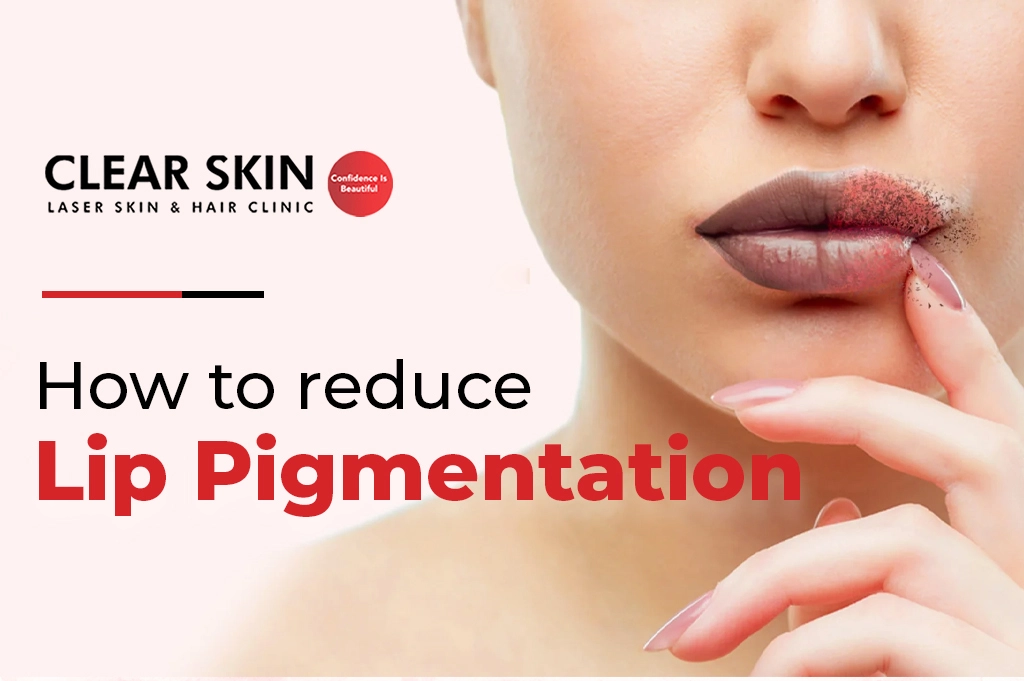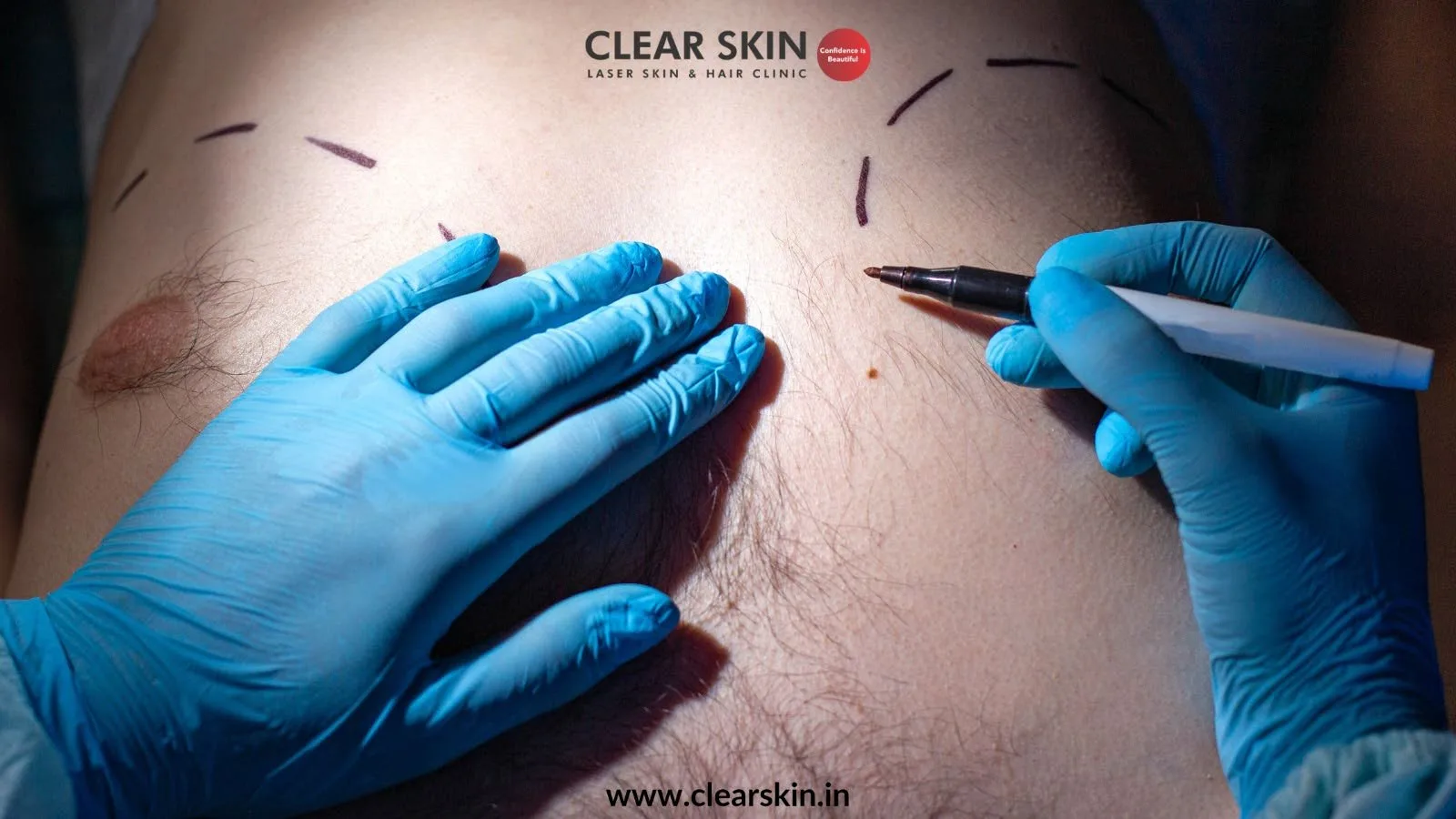
Are you dealing with those stubborn fat pockets that don’t go even after a hard workout or rash dieting? Are you looking for a procedure that could give you a more sculpted physique?
If so, then enter the world of liposuction procedure. This cosmetic procedure can help you remove excess fat deposits from specific areas to reshape your body and improve your appearance.
By removing stubborn fat deposits, you can achieve a more desired body shape that would boost your confidence and self-esteem. Along with body contouring, liposuction can also help to address medical concerns like gynecomastia (enlarged male breasts) or lipoedema (a chronic condition that causes abnormal fat accumulation).
Liposuction has become a popular cosmetic procedure for those seeking to refine their body contour. But what exactly is liposuction, and how does it work? Is it a safe procedure? What is the cost of this procedure? Let’s get the answer to all these questions.
What is the Liposuction Procedure?
Liposuction, also known as lipoplasty, is a surgical procedure that uses a suction technique to remove fat from specific body areas, including the abdomen, hips, thighs, buttocks, arms, and neck, where diet and exercise haven’t been effective. The entire procedure can take anywhere from 1 to 4 hours, depending on the complexity of the treatment.
Here’s a breakdown of how is liposuction procedure done:
Consultation: The liposuction procedure starts with a consultation with a board-certified plastic surgeon to discuss your goals, medical history, and suitability. Do your research to find an experienced cosmetic surgeon to avoid any risk. During the consultation, clear all your doubts related to the procedure. Also, be transparent regarding your medical history, as it can interfere with the healing procedure. Once satisfied with your surgeon’s answer, your surgeon will take blood tests, X-rays, and photographs to assess your health and plan the procedure.
Preparation: Your surgeon will give some pre-operative instructions like stopping any medications that could increase bleeding risk, and quitting smoking and alcohol to minimize the risks during and after the procedure. You may also be instructed to stop eating and drinking at midnight before the liposuction procedure.
Anesthesia: On the day of surgery, you will be given general or local anesthesia, depending on the extent of the procedure and your surgeon’s preference.
Incisions: After putting you at ease, your surgeon will mark the treatment area and make small incisions. The number and location of incisions will vary depending on the technique used and the areas being treated.
Fat Removal: A thin tube called a cannula is inserted through the incisions and used to loosen and suction out fat cells. Different techniques may be used, such as tumescent liposuction, power-assisted liposuction, VASER liposuction procedure, ultrasound-assisted liposuction, laser-assisted liposuction and water-assisted liposuction.
Incision-Closure: Once the desired amount of fat is removed, the incisions are closed with sutures or adhesive strips.
Recovery: After the procedure, you will likely spend a few hours in the recovery room before going home. You can experience some swelling and bruising, which is normal and subsides within 2-3 days. So, don’t get panic. You will be suggested to wear compression garments for a few weeks to reduce swelling and support a smooth recovery.
Some medications are also prescribed for pain management. Once the swelling and bruising subside, you can notice the transformation. The full transformation can take 3-6 months.
Understanding About Anesthesia
A liposuction procedure can be a transformative procedure that is performed under anesthesia so that you don’t feel any pain or discomfort during the procedure. But do you know there are different types of anesthesia, and the specific type of anesthesia depends on the size of the treatment area, your medical history, and your personal preferences?
Let’s understand the different types of anesthesia so you can make an informed decision about your liposuction journey.
Local Anesthesia
What is it? Local anesthesia involves injecting numbing medication directly into the treatment area to block pain signals. You will be awake and alert during the liposuction procedure but won’t feel any pain.
Implications:
- Suitable for smaller areas like the chin, arm and knees
- You remain awake and aware during the procedure
- Less invasive and fastest recovery
- Minimal side effects, but some patients may experience discomfort or anxiety
General Anesthesia
What is it? General anesthesia puts you into a deep sleep, completely unaware of the surgery.
Implications:
- Preferred for larger areas like thighs, abdomen, or legs or multiple treatment sites
- No awareness of the procedure, which can be comforting for you
- Requires breathing support and careful monitoring by an anesthesiologist
- Longer recovery time compared to local anesthesia
- May have more side effects like nausea, vomiting, and drowsiness after surgery
Sedation
What is it? Sedation falls between local and general anesthesia. You will receive medications through an IV or inhaler to make you drowsy and relaxed, reducing anxiety and discomfort. You might still be somewhat aware of your surroundings but won’t experience pain.
Implication:
- Can be suitable for moderate-sized treatment areas
- Offers a middle ground between local and general anesthesia
- You may be awake or lightly asleep, depending on the medication used
- Can help manage anxiety and discomfort
- Recovery time is faster than general anesthesia but slower than local anesthesia
- May not completely block pain, requiring additional local anesthesia in some cases
Various Types of Liposuction Procedure
So you are considering stepping into the world of sculpted body and smoother contour. Great! But before you jump in, it’s important to understand the different types available, each with its own perks and drawbacks.

Here is the breakdown of the most common types of liposuction procedure:
Traditional Liposuction
Traditional liposuction, also known as suction-assisted liposuction (SAL), is a widely practiced cosmetic surgery procedure used to remove unwanted fat deposits from specific areas of the body.
How Does it Work?
This procedure involves injecting a mixture of saline solution and anesthesia. The saline solution would help remove fat, and anesthesia would help reduce the pain during the procedure.
Afterward, the surgeon will make small incisions in the treated area, typically around 2-5mm, to insert the cannula. The cannula is moved back and forth to break up the fat tissue. Once the fat is loosened, a vacuum pump attached to the cannula sucks it out of the body. After that, the incisions are closed with stitches or dissolvable sutures.
What to Expect After Procedure?
After the traditional liposuction procedure, you can expect some swelling, bruising, and potential discomfort for several weeks, which is normal and gradually subsides over time.
You will be prescribed pain medication to manage discomfort during the initial recovery period. You may need to wear compression garments for several weeks to help control swelling and fluid accumulation. Drainage tubes may also be inserted temporarily to remove excess fluids.
Power-Assisted Liposuction (PAL)
Power-assisted liposuction (PAL) is a minimally invasive body contouring procedure that utilizes a vibrating cannula to loosen and remove fat deposits. It has various potential advantages over standard liposuction, including quicker recovery times.
How Does it Work?
A tumescent solution is injected into the targeted area to numb it, minimize bleeding, and shrink blood vessels. After that, small incisions are made, and a motorized cannula is inserted through these incisions. This thin cannula gently loosens and emulsifies the fat cells. The loosened fat is then suctioned out through the cannula and a vacuum machine.
The vibration breaks up fat deposits more efficiently, leading to a quicker procedure. Also, the gentle vibration minimizes damage to surrounding tissues, blood vessels, and nerves, resulting in faster healing and less bruising.
What to Expect After Procedure?
After the liposuction procedure, you can mild to moderate pain and can be managed with medication. Your surgeon will give some specific instructions, including wearing compression garments, taking prescribed medications and avoiding strenuous activities for a quick and smooth recovery.
Most people resume normal activities within 1-2 weeks, but complete recovery and final results may take up to 3-6 months.
Ultrasound-Assisted Liposuction (UAL)
Ultrasound-assisted liposuction (UAL) utilizes ultrasonic waves to liquefy fat deposits, making them easier to remove through suction. This technique offers several advantages over traditional liposuction, potentially leading to less tissue trauma, quicker healing, and improved contouring.
How Does it Work?
A tumescent solution is injected into the target area to numb the tissue so you don’t feel any pain or discomfort during the procedure. Then, a thin hollow tube with an ultrasound emitter tip is inserted into the fat layer through the incisions. The emitter releases high-frequency sound waves that vibrate the surrounding tissue, liquefying the fat cells. The liquefied fat is then gently removed through the cannula.
UAL liquefies fat cells, reducing the need for vigorous extraction and likely causing less injury to nearby tissues such as blood arteries and nerves. Less tissue stress usually means faster healing times and less post-operative edema and bruising.
What to Expect After Procedure?
While less than with traditional liposuction procedures, swelling and bruising are still common after UAL, this typically subsides within a few weeks. You may experience some discomfort in the treated area, which can be managed with medication.
Sometimes, temporary drainage tubes may be placed to remove excess fluid after the procedure. You will see the final results of your UAL procedure within a few months as the swelling subsides and the skin tightens.
VASER Liposuction
VASER, or vibration amplification of sound energy at resonance liposuction, is a type of ultrasound-assisted liposuction (UAL) that uses ultrasound technology to remove unwanted fat deposits and sculpt the body. VASER liquefies fat cells with ultrasonic vibrations, making the process more precise and potentially leading to quicker recovery and smoother results.
How Does it Work?
A tumescent solution is injected into the targeted area to numb it and constrict blood vessels to minimize bleeding and discomfort during the procedure.
A thin probe emits high-frequency ultrasound waves that gently vibrate and liquefy fat cells. This makes them easier to remove while leaving surrounding tissues, nerves, and blood vessels unharmed. Once melted, the fat is suctioned out using a cannula, a thin tube inserted through small incisions. The cannula moves in a controlled manner, allowing for precise sculpting and contouring.
VASER uses ultrasonic energy instead of mechanical suction, minimizing tissue trauma and potentially leading to less bruising, swelling, and discomfort.
What to Expect After Procedure?
Some swelling and bruising are to be expected, especially in the first few days following the procedure. This gradually subsides over the next few weeks.
The results of the VASER liposuction procedure are long-lasting, but maintaining a healthy diet and exercise routine is essential to prevent fat accumulation in the treated areas.
Laser-Assisted Liposuction
Laser-assisted liposuction (LAL) is a minimally invasive cosmetic procedure that uses laser energy to liquefy fat cells before suctioning. This technique offers several advantages over traditional liposuction, making it a popular choice for body contouring.
How Does it Work?
You will be given local anesthesia to numb the treatment area. Small incisions are made in your skin. A thin laser fiber is inserted through the incisions and delivers targeted energy to the fat cells, liquefying them. Some lasers also deliver heat energy, stimulating collagen production in the skin and leading to tighter, smoother skin. The liquefied fat and some tissue fluids are suctioned out using the cannula. The incisions are closed with stitches or dissolving sutures.
The laser seals blood vessels, minimizing post-operative bleeding and swelling. LAL typically has a shorter recovery time than traditional liposuction.
What to Expect After Procedure?
Some swelling, bruising, and tenderness are normal after LAL. These symptoms usually improve within a few weeks.
Once the swelling and bruising subsides, you can see the final results. By maintaining a healthy weight, you can enjoy the results of a laser-assisted liposuction procedure for years to come.
Water-Assisted Liposuction
Water-assisted liposuction (WAL) is a minimally invasive cosmetic surgery technique that uses a pressurized stream of saline solution to dislodge and remove fat deposits. Unlike traditional liposuction, which relies solely on suction, WAL offers a gentler approach with potentially faster recovery times and less bruising.
How Does it Work?
A thin cannula (tube) is inserted into the treatment area. Through this cannula, a high-pressure stream of saline solution is delivered, gently removing the fat cells from the surrounding tissues. This reduces the need for forceful suction, minimizing tissue trauma and potential bruising. Once removed, the fat cells are suctioned out through the same cannula. The suction is typically gentler than in traditional liposuction, further contributing to a more comfortable recovery experience.
The gentler nature of the liposuction procedure often translates to a quicker recovery time. You can experience less downtime and discomfort, allowing a faster return to normal activities.
What to Expect After Procedure?
Some swelling and bruising are to be expected after any liposuction procedure, including WAL. However, the extent is typically less than traditional liposuction and usually subsides within a few weeks.
You will need to avoid strenuous activities for several weeks to allow your body to recover.
Is Liposuction Safe?
Liposuction, while commonly a popular cosmetic procedure for targeted fat removal, comes with a safety profile. Understanding both the potential benefits and risks of surgery is crucial before making informed decisions.
Overall Safety with Qualified Surgeon
The liposuction procedure is generally the safest procedure when performed by a board-certified plastic surgeon with extensive experience in liposuction. These surgeons have the necessary training, skills, and knowledge to minimize risks and ensure optimal outcomes.
Modern technologies like ultrasound-assisted liposuction, power-assisted liposuction and laser-assisted liposuction have significantly improved safety, reducing risks associated with bleeding, infection, and uneven fat removal.
Transparency is the key. During your initial consultation, be transparent about your medical history and expectations from the procedure to achieve optimal results. Also, follow your surgeon’s pre-operative and post-operative instructions to eliminate the complications associated with the procedure.
Risks Associated With Liposuction
While liposuction is the safest procedure, it carries some side effects like any other surgical procedure. Let’s see the other side of the coin.
- Anesthesia-Related Risks: The liposuction procedure involves general or local anesthesia, which carries its own risks, like allergic reactions or breathing complications.
- Bleeding and Bruising: While post-operative bleeding and bruising are common and usually resolve within a few weeks if you experience excessive bleeding, you should consult your surgeon immediately for additional intervention.
- Contour Irregularities: Uneven fat removal or skin laxity can lead to bumps, waves, or indentations in the treated area, which require revision surgery.
- Infection: While rare, post-operative infections can occur, but don’t worry, as they can be managed with antibiotics.
- Fluid Accumulation (Seroma): Temporary pockets of fluid, called seroma, may form under the skin. This fluid accumulation requires needle drainage.
- Numbness or Nerve Damage: You can experience temporary numbness in treated areas, which is common and usually resolves within weeks. Although rare, permanent nerve damage can also occur.
- Fat Embolism: It is a serious complication in which fat enters the bloodstream and potentially reaches the lungs or brain. It’s more likely with large-volume liposuction.
- Organ Damage: In rare cases, damage to deeper structures like nerves, blood vessels, or internal organs can occur.
But what leads to all these complications?
- Your age
- Your lifestyle habits like cigarette smoking or excessive alcohol consumption
- Surgeon’s expertise
- Surgery techniques
- Number of treated areas
- Facility type
- Type of liposuction procedure
- The volume of fat removal
- Type of anesthesia
- Your overall health
So, how could you reduce these risks?
- Choose a board-certified plastic surgeon
- Maintain a healthy weight through diet or exercise before considering liposuction
- Quit smoking and alcohol consumption at least one month before the procedure
- Choose a well-equipped facility for the procedure that follows all the safety protocols
- Understand the limitations of liposuction, discuss potential risks and complications, and set realistic goals for body contouring to reduce complications
- Follow your surgeon’s post-operative instructions carefully
What Is The Cost of Liposuction Procedure in India?
The average cost of a liposuction procedure typically falls between ₹80,000 and ₹1,80,000. However, this cost can vary from patient to patient, depending on several factors. These factors may include:
-
- Targeted Areas: Treating multiple or larger areas, like the liposuction procedure on stomach typically costs more than focusing on a single, smaller area like the chin.
- Amount of Fat Removed: Extensive fat removal requires longer operating times and specialized techniques, increasing the price.
- Your Individual Health: If you have pre-existing health conditions, you may require additional procedures or monitoring, increasing the overall cost of the procedure.
- Type of Liposuction Technique: New liposuction procedures like ultrasound-assisted liposuction (UAL) or laser-assisted liposuction (LAL) are generally more expensive than traditional liposuction.
- Number of Sessions Required: In some cases, multiple sessions are required for optimal results, which can significantly increase the overall cost.
- Anesthesia Type: There are two main types of anesthesia used: general anesthesia and local anesthesia. General anesthesia is typically more expensive than local anesthesia.
- Surgeon’s Experience and Reputation: Highly experienced and renowned surgeons with a proven track record typically charge more. Young or less experienced surgeons may offer lower prices, which can compromise the desired results. Therefore, don’t compromise the experience over cost.
- City and Region: The cost of liposuction procedures tends to be higher in metropolitan cities compared to smaller towns or rural areas due to the high cost of living.
- Hospital Amenities and Equipment: Advanced facilities with cutting-edge equipment may charge more for their facilities.
- Additional Costs: Additional charges like the cost of anesthesia, medications, compression garments and hospital fees are usually not included in the liposuction surgery procedure cost, but they can increase the overall cost of the procedure.
Bonus Tip: To get a more accurate estimate for your specific case, it’s best to consult with a board-certified plastic surgeon who can assess your individual needs and provide a personalized cost breakdown. Be sure to ask about the surgeon’s experience, qualifications, and success rates, and compare prices from different clinics before making a decision.
Conclusion!
The liposuction procedure can be a valuable tool for body contouring and improving self-confidence when approached with complete awareness and realistic expectations. It can help to refine your body, sculpt desired shapes, and boost your self-image. Yet, it’s not a magic wand or a weight-loss solution.
Remember, the journey to a desired body begins with healthy habits, exercise, and a balanced diet. Liposuction should complement these efforts, not replace them.
If you want a liposuction procedure in Pune, Clear Skin Clinics is your one-stop solution. Our board-certified plastic surgeons will assess your body, consider your goals and help you get a more sculpted shape.
For treating your skin condition, feel free to get in touch with one of our best
dermatologists in Pune. You can also call on
+919584584111 to book an appointment at one of our skin clinics near you.

















Leave a Comment
Your email id will not be published.Required fields are marked*